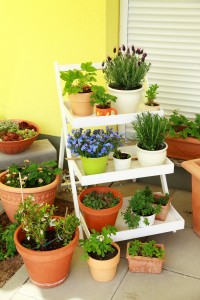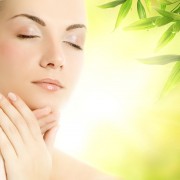Indoor Plants-Essential Oils and Hygiene
There are a few different methods one can utilize in attempting to produce their own fragrances. Balsam is a solution of plant-specific resins in plant-specific solvents (essential oils). Essential oils have been extracted for thousands of years and it is done fairly easily. Although, it is time consuming and it requires an ample amount of plant material to produce a small quantity of oil. But on a side note, pure 100% essential oil is very expensive to purchase. Making it yourself is not very difficult and using your plantation or garden for organic essential oil production only makes sense when using the fruits of your labour to their fullest potential.
Some botanicals store essential oil in their leaves or flowers while other botanicals may store their oils in their rinds, seeds or other plant parts. Some plants yield essential oils from multiple parts of the botanical that they subsequently came from and on the other hand not all plants produce enough essential oil to sustain the commercial cost ofextracting them.
Consider that we grow our plant life at home to produce certain qualities that we may not be able to attain from store bought produce and flowers. The plant material you use must be clean and free of pesticides, herbicides, fungicides, and other chemicals. You can use fresh or dried plant material as well as herbs, spices, flower petals, or citrus fruit rinds.
One of the easiest ways to make an essential oil is by steaming the plant material; it will help break apart the oil molecules from the rest of the plant. Essential oils are liquids that are soluble in lipids and generally they have lower density than water. The steamed oils are then carried through a condenser, where the water and oil are separated though a change in temperature. Then they are collected in a vessel, after which the oil settles on the top of the water, now called Hydrosol. The oil is siphoned off the top of the water and you are left with aromatic water after the processing is complete via steam or water distillation.
Essential oils can originate from many sources, including leaves such as bay, bergamot, mint, cinnamon, eucalyptus, geranium, and tea tree as well as flowering herbs such as basil, catnip, sage, holy basil, hyssop, lavender, lemon balm, marjoram, oregano, peppermint, rosemary, spearmint, thyme, and yarrow. It can also originate from flowers, their petals & their buds including chamomile, helichrysum, jasmine, and rose as well as grasses such as citronella, ginger grass, lemon grass and palmarosa.
Also to note, you can infuse oils with flowers, herbs & spices as well. It is a simple process of infusing flowers to transfer the flavour, you can do this by heating or letting it sit in a sunny spot so that the volatile oils can transfer scent or flavour into a carrier oil. It can be used to add flavour to cooking oils. As well as making scent oils for use in aromatherapy, massage oils and making beauty products like soaps and lotions.
Some of the types of spices and constituents used to make essential oils are lemons, bergamot, cedar, cypress, citronella, juniper, lavender blossoms, eucalyptus, geraniums, jasmine, lilac, linalool, marjoram, pine, rosemary, salvia, sandalwood, terpineol, thyme.
“Interest in essential oils has revived in recent decades with the popularity of aromatherapy, a branch of alternative medicine that claims those essential oils and other aromatic compounds have curative effects. Oils are volatilized or diluted in carrier oil and used in massage, diffused in the air by a nebulizer, heated over a candle flame, or burned as incense”.
Remember, waste not, want not! If you have unused formulas that have sat on the shelf and aged, use them for burning as an incense or mix them into a new recipe for candles, air fresheners or potpourri.
In short we recommend growing your own all year round for your home-made recipes including essential oils, health, hygiene and plant life for decor. Using our LED grow lights is a definitive way to attain a bountiful harvest for a natural and organic alternative to store bought supplies. With great reason we grow organically for a healthy and safe food supply, for a clean and sustainable environment, and of course because the results from the experience is enjoyable and rewarding, from seed to harvest. Some of the most common plants that can be considered for your garden and can be used in a natural and organic way for general hygiene products are as follows:
Aloe, Arrowroot, Basil, Beeswax, Borage, Calendula, Cane Sugar, Carrot, Chamomile, Citronella, Cucumber, (Lemon) Cucumber, Fennel, Ginger, Gotu Kola, Hibiscus, Lavender, Lemongrass, Mint, Neem, Oregano, Passionflower, Peppermint, Plantain Leaf, Rosemary, Sage, Spearmint, Stevia, Thyme, and Vertiver (Chrysopogon zizaniodes).
We are currently moving forward with a trial grow of Avocado, Cayenne Pepper and Goji berries (Wolfberries) and hope to try growing things like Cinnamon, Coffee, Vanilla (but this will be a very hard one – in home) and Popcorn (this will be a fun one, indoors).
References: Essential Oil, List of Essential Oils, Parabens, Chemicals in your cosmetics-Dibutyl-phthalate, Endocrine Disruptors.






Leave a Reply
Want to join the discussion?Feel free to contribute!